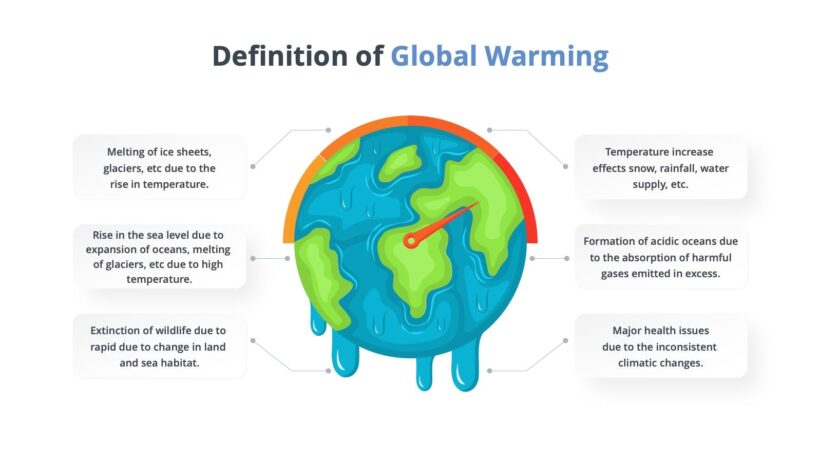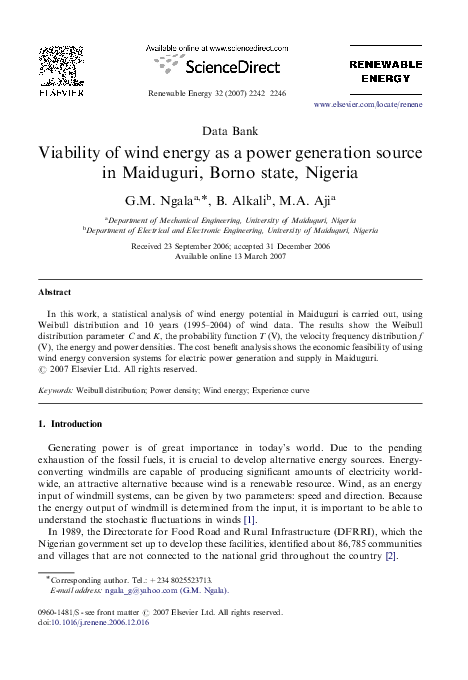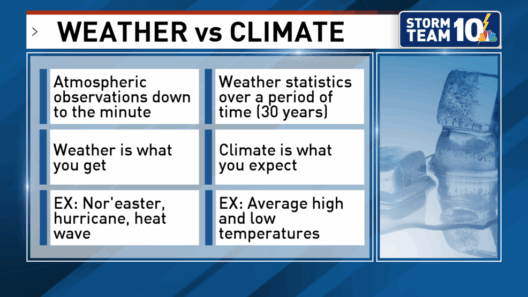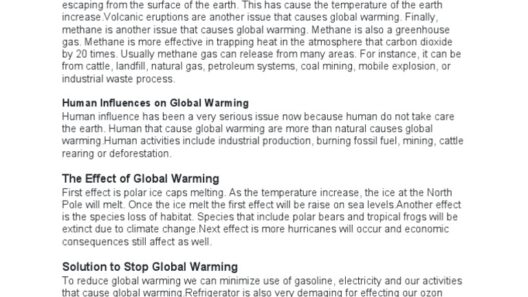Understanding Global Warming: The Scientific Perspective
Global warming, often interchanged with the broader term “climate change,” refers specifically to the long-term increase in the average temperature of Earth’s atmosphere due to human activities. The phenomenon is predominantly driven by the accumulation of greenhouse gases (GHGs) such as carbon dioxide (CO2), methane (CH4), and nitrous oxide (N2O) in the atmosphere, which trap heat efficiently. This process can be traced back to the industrial revolution when fossil fuels—coal, oil, and natural gas—became the primary sources of energy, releasing vast quantities of GHGs into the atmosphere.
The Intergovernmental Panel on Climate Change (IPCC) has provided compelling evidence that these changes are not merely fluctuations but reflect a concerning trend aggravated by anthropogenic activities. The increase in CO2 levels, for instance, has reached concentrations not seen in millions of years, creating an urgent need for society to understand and address this looming threat.
Critical Indicators of Global Warming
To fully grasp the implications of global warming, we must examine its indicators. These include rising sea levels, shrinking ice sheets, coastal flooding, and changes in precipitation patterns. The melting of the polar ice caps is a particularly alarming sign of accelerated warming. As the ice retreats, it exposes darker ocean surfaces that absorb more sunlight, creating a feedback loop that further accelerates global temperatures.
Moreover, extreme weather events are becoming increasingly common and severe. Hurricanes, droughts, and wildfires, once considered anomalies, are quickly becoming the new norm in various regions across the globe. Understanding the multifaceted effects of these changes is imperative, as they disrupt ecosystems, threaten biodiversity, and jeopardize food supply chains.
The Socioeconomic Impact of Global Warming
The ramifications of global warming extend far beyond environmental consequences; they infiltrate the fabric of our economies and societies. Agriculture is under siege as changing climates alter growing seasons, reduce crop yields, and enhance the prevalence of pests and diseases. This variability threatens food security—a critical concern for global populations, particularly in developing nations where resilience to climate disruptions is weak.
Moreover, access to clean water is becoming increasingly precarious. A warmer climate instigates shifts in precipitation patterns, leading to arid conditions in some areas while creating deluges in others. The resultant water scarcity can spark conflicts, migration, and humanitarian crises as people are forced to venture far beyond their homeland in search of resources.
Economic systems are also facing risks; industries reliant on natural resources are already grappling with fluctuating availability. Tourism, fresh water supplies, and fisheries are all vulnerable to climate fluctuations that threaten livelihoods. It is imperative for businesses to recognize these risks and adapt swiftly; those who fail may suffer dire consequences in a shifting economic landscape driven by climate imperatives.
Addressing the Global Warming Challenge
Combatting global warming necessitates a multi-faceted approach, uniting efforts from governments, businesses, and individuals alike. Policy measures aimed at reducing GHG emissions are paramount. Governments must prioritize transitions to renewable energy sources, such as solar, wind, and hydroelectric power. Investments in energy efficiency and sustainable infrastructure are also essential components of this shift.
Corporate responsibility cannot be understated. Businesses must adopt sustainable practices, ranging from reducing energy usage to implementing circular economies that minimize waste. Engaging with consumers—highlighting commitment to sustainability—will not only attract eco-conscious buyers but also contribute to a larger cultural paradigm shift towards preservation of the planet.
Individual action, while seemingly marginal compared to institutional change, can create ripples of transformation. Choices regarding transportation, diet, and product consumption play a pivotal role in curbing overall emissions. Simple acts, like recycling, utilizing public transit, or supporting local sustainable businesses, contribute significantly to reducing one’s carbon footprint and raising awareness.
Global Cooperation: The Necessity for Unity
Ultimately, global warming presents a collective challenge that transcends national borders. Climate change knows no boundaries; thus, solutions must be jointly pursued. International agreements, like the Paris Accord, emphasize the urgency of global cooperation in maintaining temperature rise below 1.5°C. These frameworks foster collaboration, incentivizing countries to reduce carbon emissions while sharing technology and resources.
Public engagement is critical. Communities must be informed, mobilized, and directed toward climate action. Education regarding the science of climate change, its threats, and mitigation strategies can enhance public understanding and encourage proactive involvement. Advocacy for climate policy reform, engaging elected officials, and supporting grassroots organizations dedicated to environmental conservation can amplify the collective voice demanding action.
Conclusion: A Call to Action
The threat of global warming is not a distant specter—it is an immediate crisis demanding urgent, concerted action. Every sector of society must acknowledge its role and responsibility in combating this pressing issue. Understanding the multifaceted nature of global warming, from its scientific underpinnings to its societal consequences, empowers individuals and institutions to foster meaningful change.
As we confront the challenges posed by climate change, it is imperative to recognize that our choices today will shape the world for generations to come. The time for complacency has passed; decisive action is the only pathway to a sustainable and resilient future.








